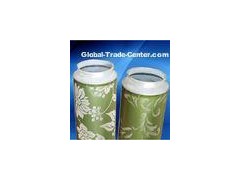Multicolor Rotary Screen Printing Elastic Ni Thickness 105M High Toughness
The virtues of rotary screen printing are most apparent when the process is compared to traditional flat screen printing.
The situation is a little different with flatbed presses. On a flatbed press, printing is a two-step process that involves a pass over the screen by the floodbar to fill mesh openings with ink, followed by a squeegee pass to bring the stencil and substrate into contact for ink transfer. As previously noted, the flooding and printing action on a rotary system is all part of the same continuous motion, and separate strokes for these functions are not required. Not only does this approach reduce printing times, but it also removes the floodbar as a variable from the printing process.
Rotary vs. flat screen printing
Productivity Among the biggest attractions of rotary screen printing is its production speed. On a rotary press, images are applied to the entire width of the substrate as the material moves continuously through the printing mechanism--substrate size really has no impact on press speed. The only factor that determines the production rate is the speed of screen rotation/substrate movement (remember, these values are the same), which is limited primarily by the type and rheology of the ink being used. Because of the way rotary presses operate, their production rates are reported as linear measurements and typically fall within a range of 100-450 ft/min (30-100 m/min), depending on the model and the specific application.
Material handling Because rotary presses work with web-fed materials, they eliminate the need to feed substrates into the press piece by piece, as is common with flatbed units. Users simply thread the desired material into a rotary machine from a reel at one end, and the machine continues to pull more material through as needed.
Delivery time: within 15 to 25 days
Package:plywood cases or as you required
Specifications
Excellent toughness & elasticity,
be used for 5~7 times repeatedly,
saving dyestuff,
bear high temperature
Rotary screen printing:
Multicolor Rotary Screen Printing Elastic Ni Thickness 105M High Toughness








